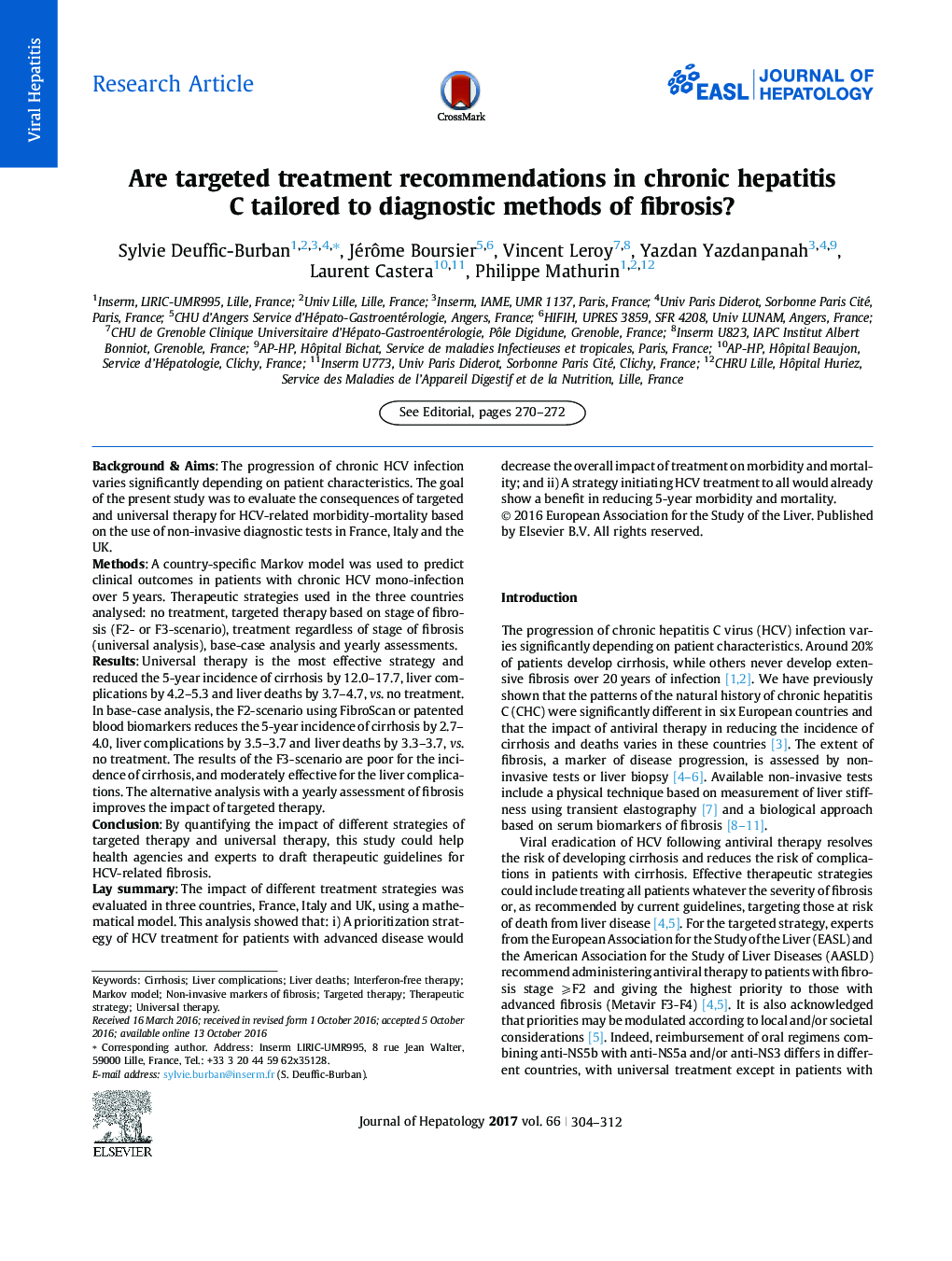| Article ID | Journal | Published Year | Pages | File Type |
|---|---|---|---|---|
| 5660347 | Journal of Hepatology | 2017 | 9 Pages |
Background & AimsThe progression of chronic HCV infection varies significantly depending on patient characteristics. The goal of the present study was to evaluate the consequences of targeted and universal therapy for HCV-related morbidity-mortality based on the use of non-invasive diagnostic tests in France, Italy and the UK.MethodsA country-specific Markov model was used to predict clinical outcomes in patients with chronic HCV mono-infection over 5Â years. Therapeutic strategies used in the three countries analysed: no treatment, targeted therapy based on stage of fibrosis (F2- or F3-scenario), treatment regardless of stage of fibrosis (universal analysis), base-case analysis and yearly assessments.ResultsUniversal therapy is the most effective strategy and reduced the 5-year incidence of cirrhosis by 12.0-17.7, liver complications by 4.2-5.3 and liver deaths by 3.7-4.7, vs. no treatment. In base-case analysis, the F2-scenario using FibroScan or patented blood biomarkers reduces the 5-year incidence of cirrhosis by 2.7-4.0, liver complications by 3.5-3.7 and liver deaths by 3.3-3.7, vs. no treatment. The results of the F3-scenario are poor for the incidence of cirrhosis, and moderately effective for the liver complications. The alternative analysis with a yearly assessment of fibrosis improves the impact of targeted therapy.ConclusionBy quantifying the impact of different strategies of targeted therapy and universal therapy, this study could help health agencies and experts to draft therapeutic guidelines for HCV-related fibrosis.Lay summaryThe impact of different treatment strategies was evaluated in three countries, France, Italy and UK, using a mathematical model. This analysis showed that: i) A prioritization strategy of HCV treatment for patients with advanced disease would decrease the overall impact of treatment on morbidity and mortality; and ii) A strategy initiating HCV treatment to all would already show a benefit in reducing 5-year morbidity and mortality.
Graphical abstractDownload high-res image (279KB)Download full-size image
